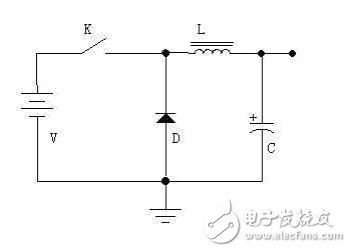According to the working state of the adjusting tube, we often divide the regulated power supply into two categories: linear regulated power supply and switching regulated power supply.
Linear regulated power supply refers to the regulated power supply that the regulator works in a linear state. But in the switching power supply, it is different. The switching tube (in the switching power supply, we generally call the adjusting tube as the switching tube) works in two states of on and off: on-the resistance is very small; off-the resistance is very Big.
Switching power supply is a relatively new type of power supply. It has the advantages of high efficiency, light weight, can be raised and lowered, and large output power. However, because the circuit works in the switching state, the noise is relatively large. Through the following figure, let's briefly talk about the working principle of the step-down switching power supply. As shown in the figure, the circuit is composed of a switch K (transistor or field effect tube in the actual circuit), a freewheeling diode D, an energy storage inductor L, and a filter capacitor C. When the switch is closed, the power supply supplies power to the load through switch K and inductor L, and stores part of the electrical energy in inductor L and capacitor C. Due to the self-inductance of the inductor L, the current increases slowly after the switch is turned on, that is, the output cannot immediately reach the power supply voltage value. After a certain period of time, the switch is turned off. Due to the self-inductance of the inductor L (it can be considered that the current in the inductor has an inertial effect), the current in the circuit will be kept unchanged, that is, it will continue to flow from left to right. This current flows through the load, returns from the ground, flows to the anode of the freewheeling diode D, passes through the diode D, and returns to the left end of the inductor L, thereby forming a loop. The output voltage can be controlled by controlling the time that the switch is closed and opened (ie PWM-pulse width modulation). If the on and off time is controlled by detecting the output voltage to keep the output voltage unchanged, this achieves the purpose of voltage regulation.

During the switch is closed, the inductor stores energy; during the switch is open, the inductor releases energy, so the inductor L is called the energy storage inductor. The diode D is responsible for providing a current path to the inductor L during the switch off period, so the diode D is called a freewheeling diode.
In the actual switching power supply, the switch K is replaced by a triode or a field effect tube. When the switch is open, the current is small; when the switch is closed, the voltage is small, so the heating power U & TImes; I will be small. This is the reason for the high efficiency of the switching power supply.
The biggest feature of the temperature regulating valve is that it only needs an ordinary 220V power supply and uses the energy of the regulated medium to directly automatically regulate and control the temperature of steam, hot water, hot oil and gas. It can also be used to prevent overheating or heat exchange. The valve has the advantages of simple structure, convenient operation, wide temperature regulation range, fast response time and reliable sealing performance, It can be adjusted at will during operation, so it is widely used in hot water supply in chemical industry, petroleum, food, light textile, hotels and restaurants.
Temperature Regulating Valve,New Needle Valve,Marine Butterfly Valve,Valve Pressure Gauge
Taizhou Jiabo Instrument Technology Co., Ltd. , https://www.jbcbyq.com